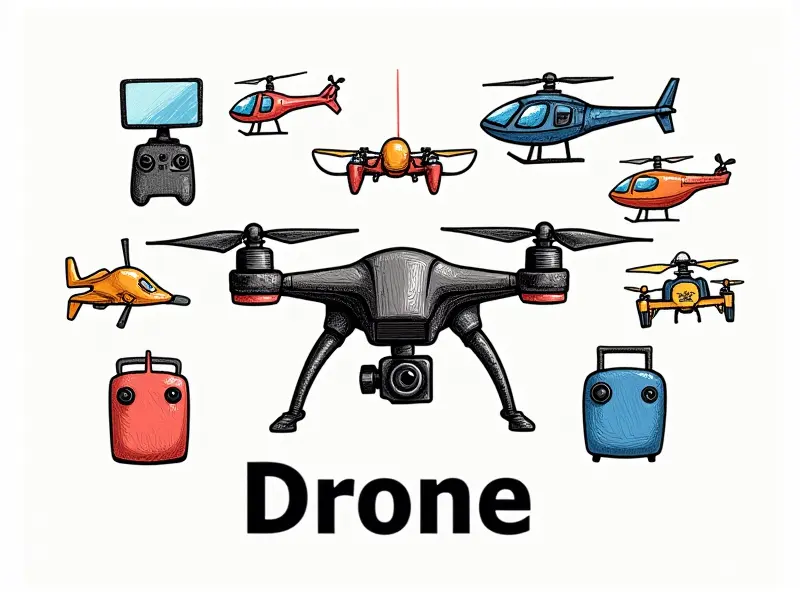How to mount FPV gear securely

Mastering FPV Gear Installation Techniques
First-time users of First-Person View (FPV) technology often face the challenge of mounting their gear securely. Proper installation is crucial for ensuring a stable and reliable flight experience, especially when flying at high speeds or in challenging environments. This article will guide you through various techniques to mount your FPV camera, video transmitter (VTX), receiver, and other essential components safely.
Ultimate Guide to Securing Your FPV Setup
To achieve a rock-solid FPV setup, it's important to understand the different mounting options available. From adhesive pads to custom brackets, there are numerous ways to secure your gear. This guide will cover everything from selecting the right materials to installing them correctly.
Top Tips for Securely Mounting FPV Gear
- Select High-Quality Adhesive: Use strong double-sided tape or foam tape designed specifically for electronic devices.
- Consider Custom Brackets: For a more permanent solution, 3D-printed brackets offer excellent stability and can be tailored to fit your specific setup.
- Use Zip Ties Wisely: While zip ties are handy for securing wires, they should not be used as the primary mounting method due to their tendency to loosen over time.
Achieving Rock-Solid FPV Mounts Easily
The key to achieving rock-solid mounts lies in understanding the dynamics of your drone and the environment it will operate in. Factors such as wind resistance, vibration, and weight distribution all play a role in determining the best mounting strategy.
Quick Tips for Securely Mounting FPV Camera Installation
- Position Correctly: Ensure your camera is mounted at an optimal angle to provide clear visibility without obstructing propellers or other components.
- Protect from Shock: Use rubber grommets or similar shock-absorbing materials between the camera and mounting surface to prevent damage during impacts.
The Art of Secure FPV Equipment Mounting
Mounting your FPV equipment is both an art and a science. It requires careful consideration of aerodynamics, weight distribution, and the specific needs of each component in your setup. By following these guidelines, you can create a robust and reliable system that performs flawlessly during flights.
Ensure Stability with FPV Gear Mounts
A stable mount is essential for clear video transmission and smooth flight control. Here are some tips to ensure stability:
- Distribute Weight Evenly: Balance the weight of your components across the drone's frame to prevent it from becoming top-heavy or unstable.
- Use Reinforced Mounts: For heavier equipment, consider reinforced mounting solutions that can withstand higher stress levels.
DIY FPV Gear Mounts for Maximum Security
If you're looking to customize your setup further, DIY mounts offer a flexible and cost-effective solution. With 3D printing technology, you can create custom brackets tailored to fit your specific needs:
- Create Custom Designs: Use CAD software to design brackets that perfectly match the dimensions of your drone frame.
- Select Durable Materials: Opt for high-strength filament like PETG or nylon to ensure durability and longevity.
Best Practices for Mounting FPV Cameras and Antennas
Mounting cameras and antennas correctly is crucial for optimal performance. Here are some best practices:
- Antenna Placement: Position your VTX antenna away from the camera to minimize interference.
- Camera Orientation: Ensure the camera's lens faces forward, providing a clear view of the flight path.
Easy Steps for Safe FPV Mounting
Making sure your FPV gear is mounted safely involves several steps. Follow these easy guidelines to ensure everything is secure and ready for action:
- Inspect Components: Before mounting, check all components for any signs of damage or wear.
- Test Stability: After installation, test the stability by gently shaking the drone to see if anything loosens.
Fast and Foolproof FPV Mounting Guide
To make your mounting process quick and efficient, follow this foolproof guide:
- Choose Reliable Adhesives: Opt for high-quality double-sided tape or foam tape that can withstand vibrations.
- Secure Wires Properly: Use cable ties to keep wires organized and out of the way, reducing the risk of tangling or breaking.
Conclusion
Maintaining a secure FPV setup is essential for both safety and performance. By following these guidelines and best practices, you can ensure that your gear remains stable and reliable throughout all flights. Whether you're using adhesive pads, custom brackets, or other mounting solutions, the key to success lies in careful planning and execution.

